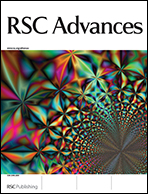In the present study, we explored a novel design strategy of heteronuclear phosphorescent iridium(III) complexes chelated by BF2 moiety with 3-hydroxypicolinic acid as the chelate ligand and synthesized a new series of iridium(III) complexes [Ir(dfppy)2(hpa)BF2] (1b), [Ir(ppy)2(hpa)BF2] (2b) and [Ir(tpq)2(hpa)BF2] (3b) (hpa = 3-hydroxypicolinic acid, dfppy = 2-(2,4-difluorophenyl)pyridine, ppy = 2-phenylpyridine, tpq = 2-(thiophen-2-yl)quinoline) under mild conditions. The emission colors and wavelengths of iridium(III) complexes can be affected evidently by chelating BF2 moiety into iridium(III) complexes, and this effect will be changed with the difference of cyclometalating CˆN ligands. A combination of UV-vis absorption, photoluminescence, excited-state lifetime measurements and theoretical calculations has provided the significant insight into the nature of the excited state and photophysical properties of these interesting iridium(III) complexes. Moreover, the exclusive staining of cytoplasm and low cytotoxicity were demonstrated for these new iridium(III) complexes, which made them promising candidates as multi-color phosphorescent dyes for living cell imaging.

You have access to this article
 Please wait while we load your content...
Something went wrong. Try again?
Please wait while we load your content...
Something went wrong. Try again?


 Please wait while we load your content...
Please wait while we load your content...